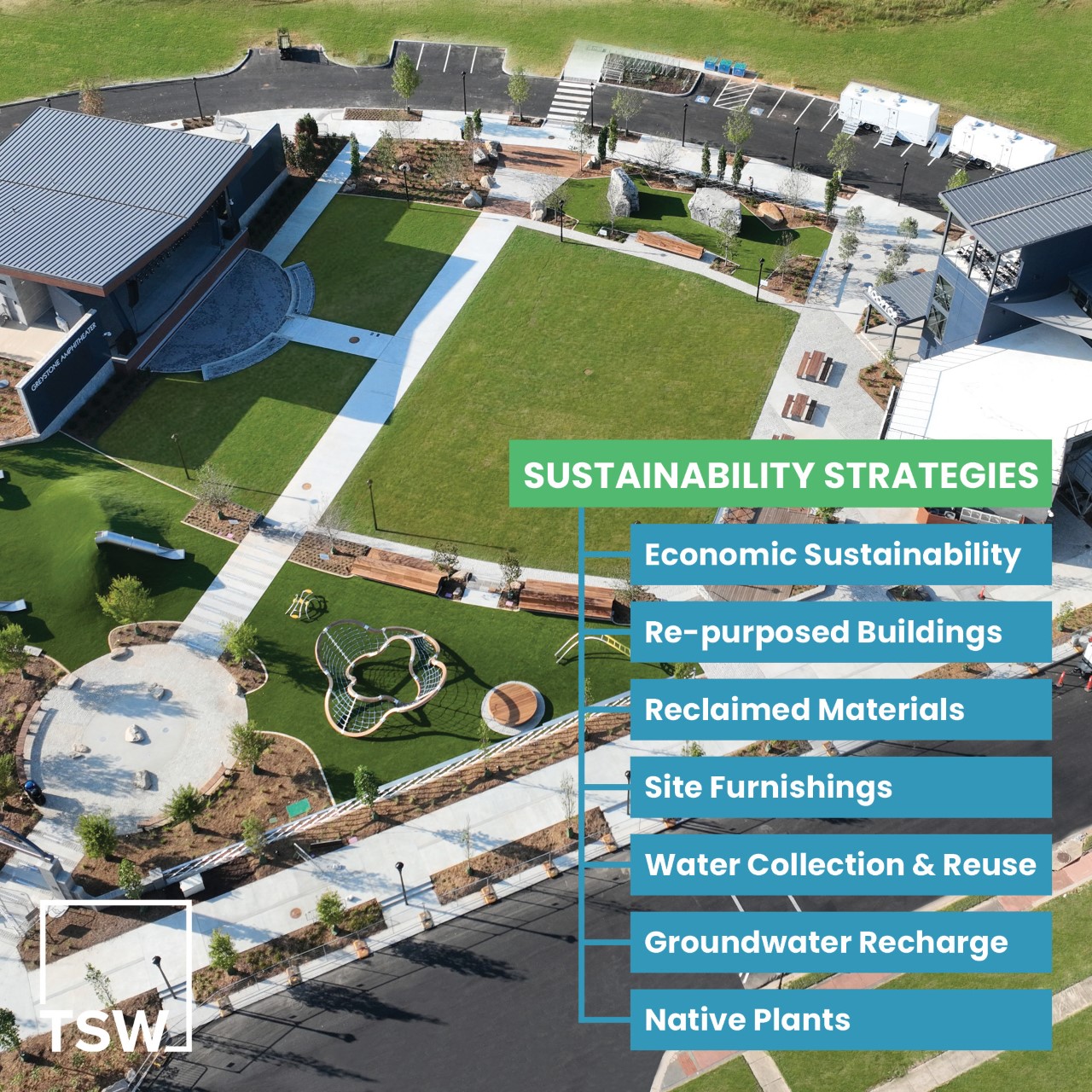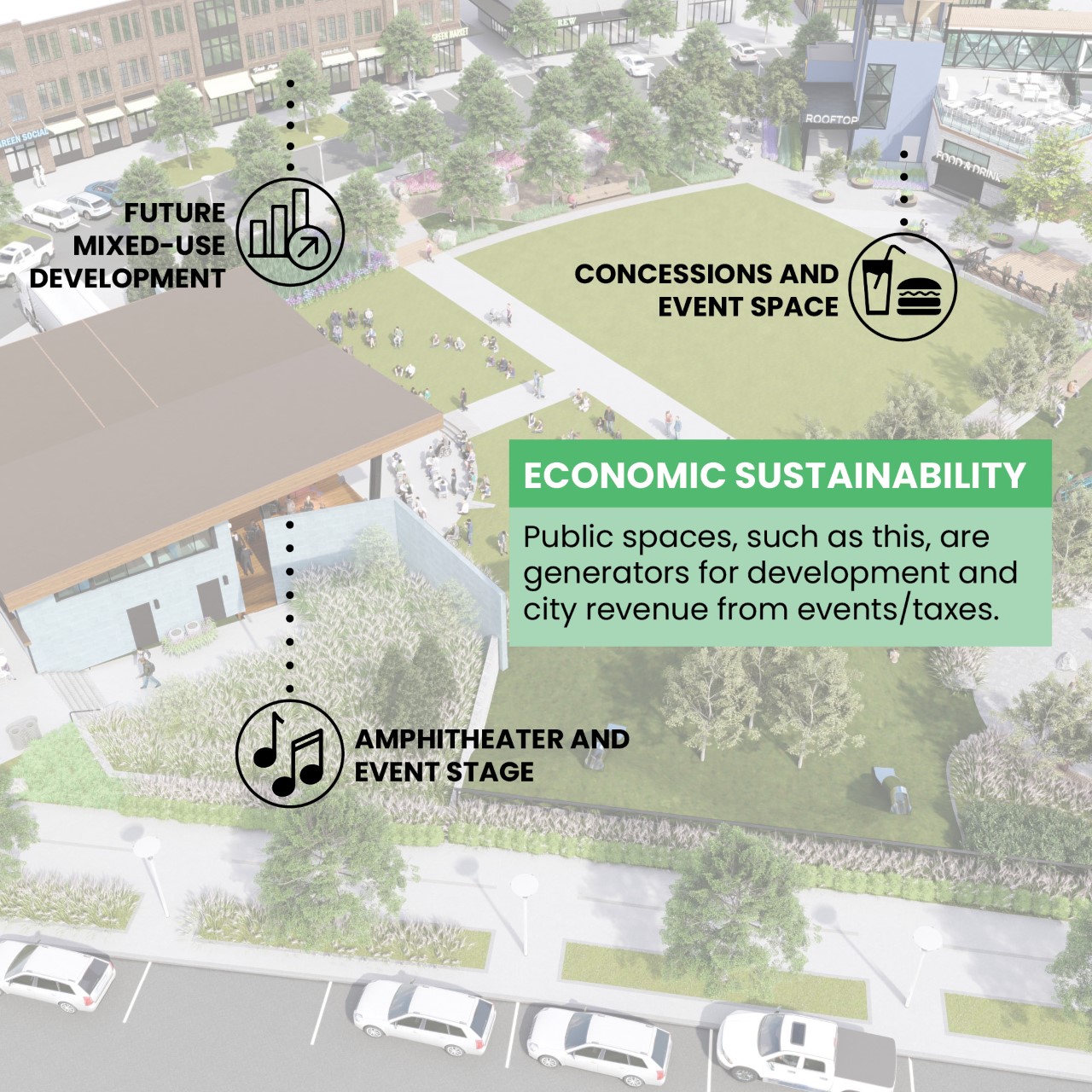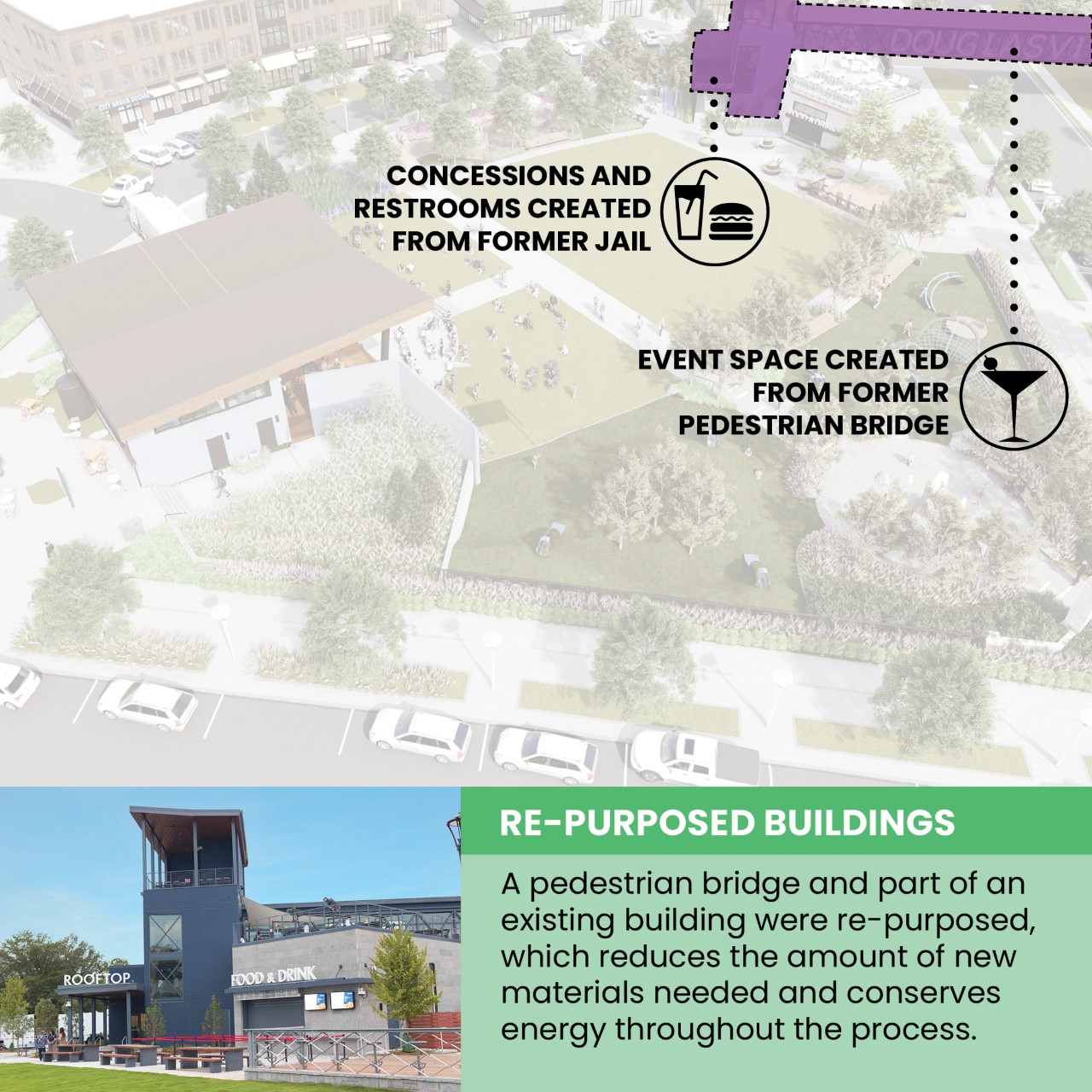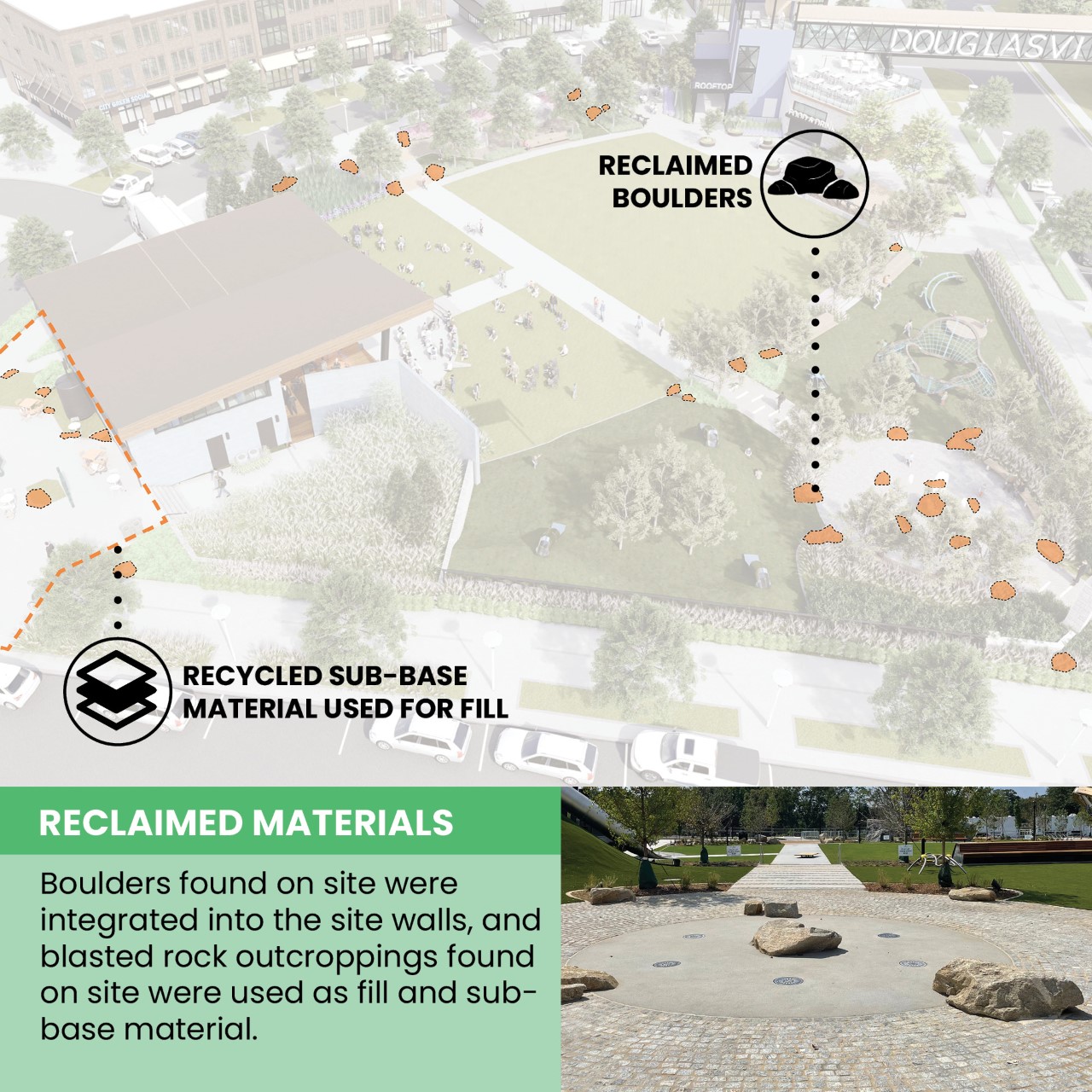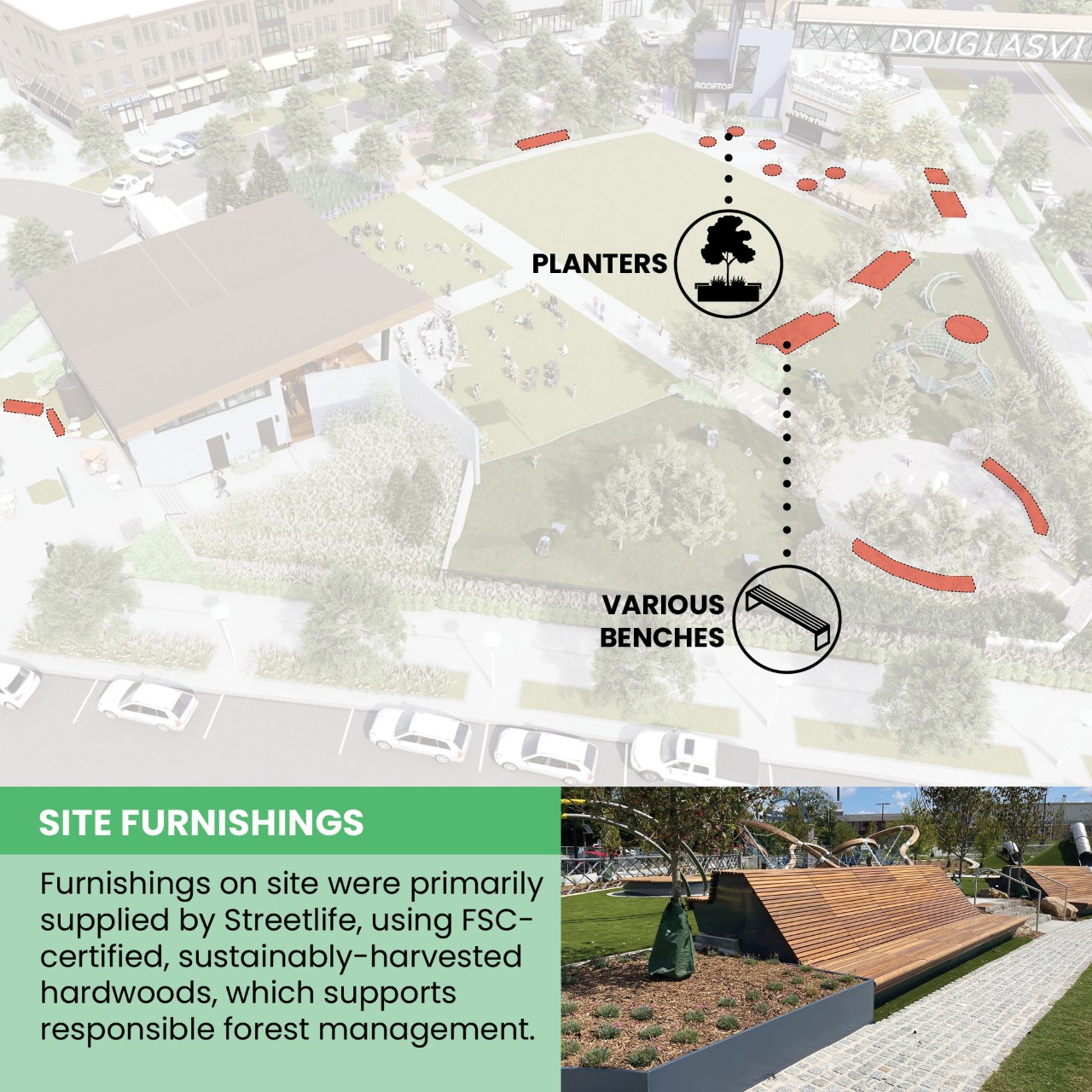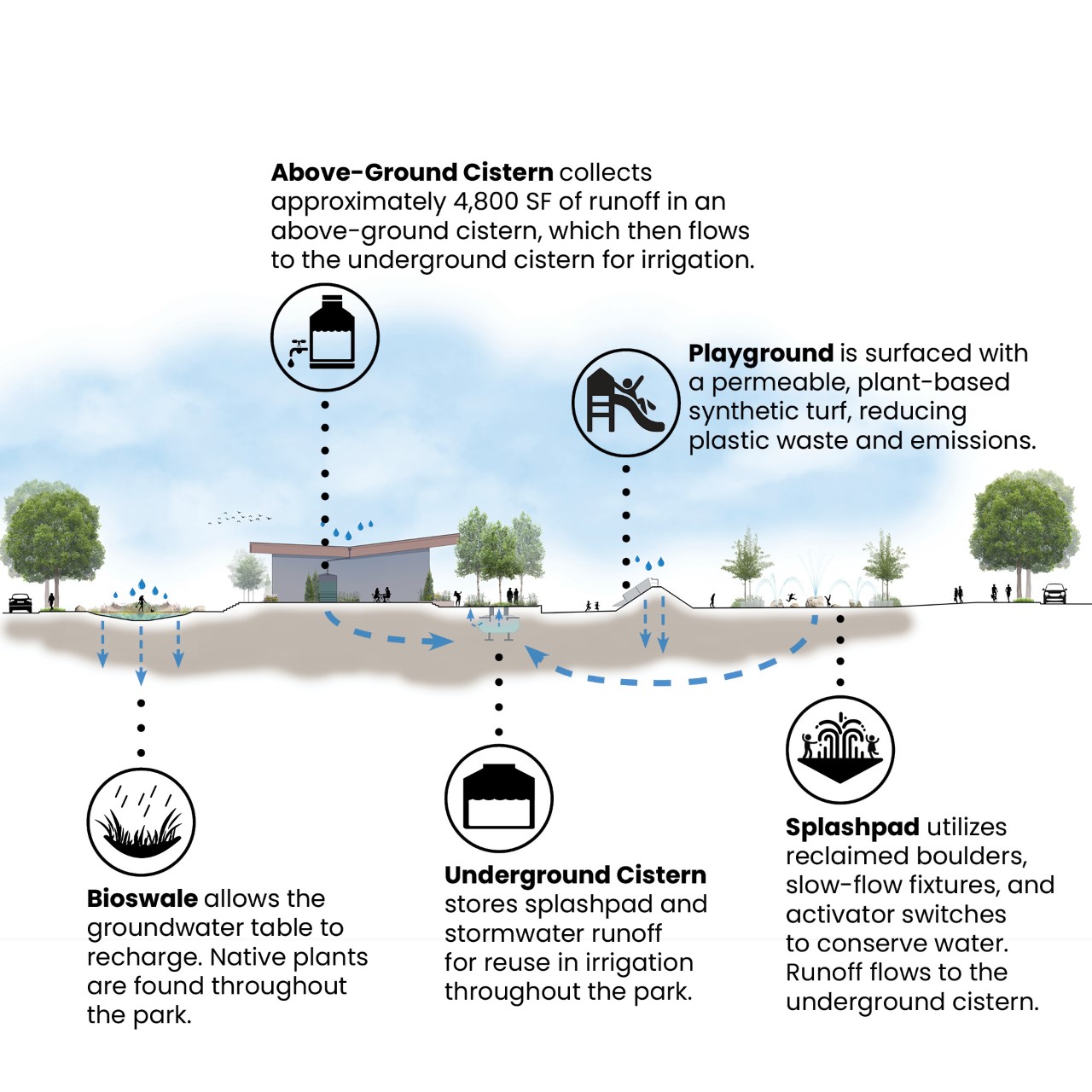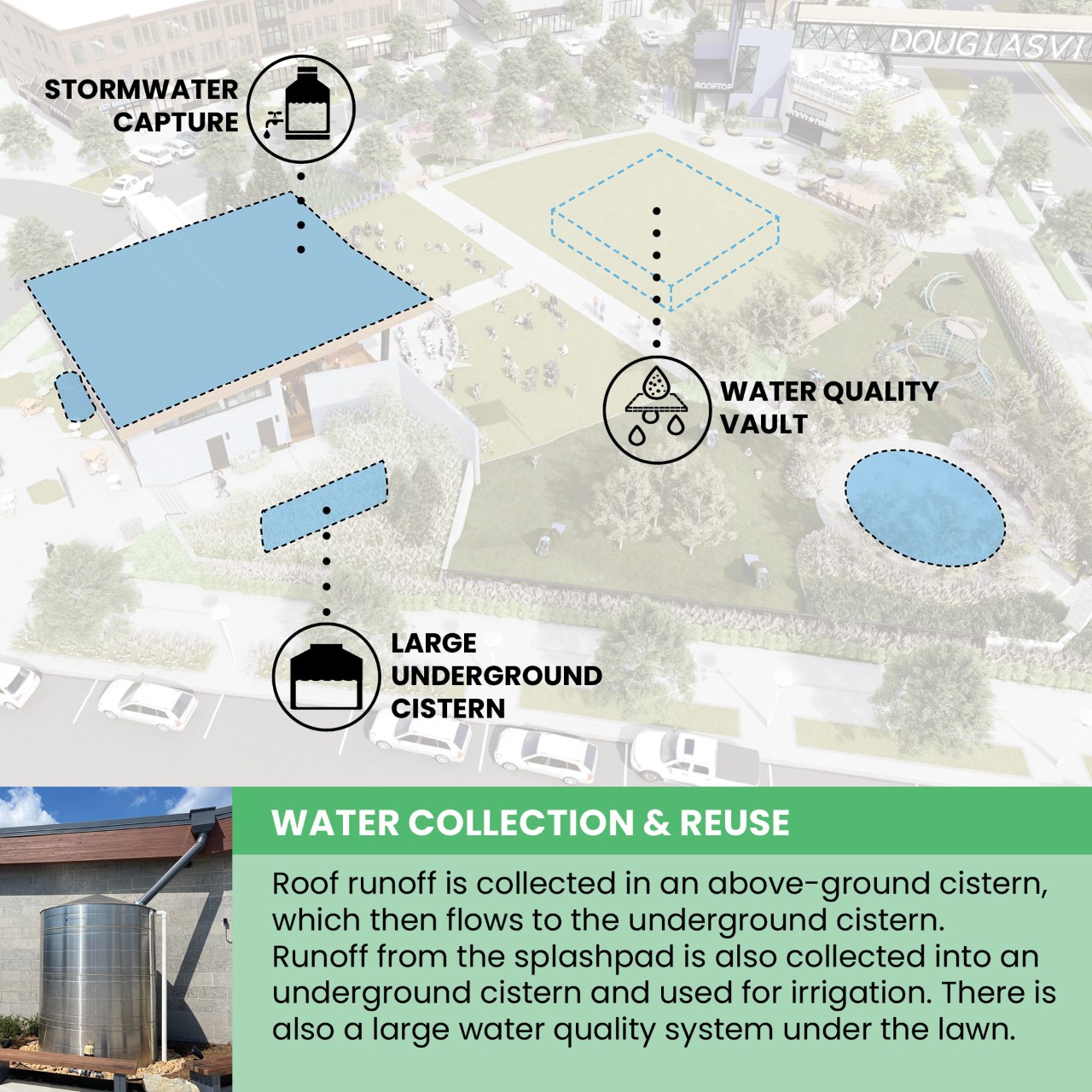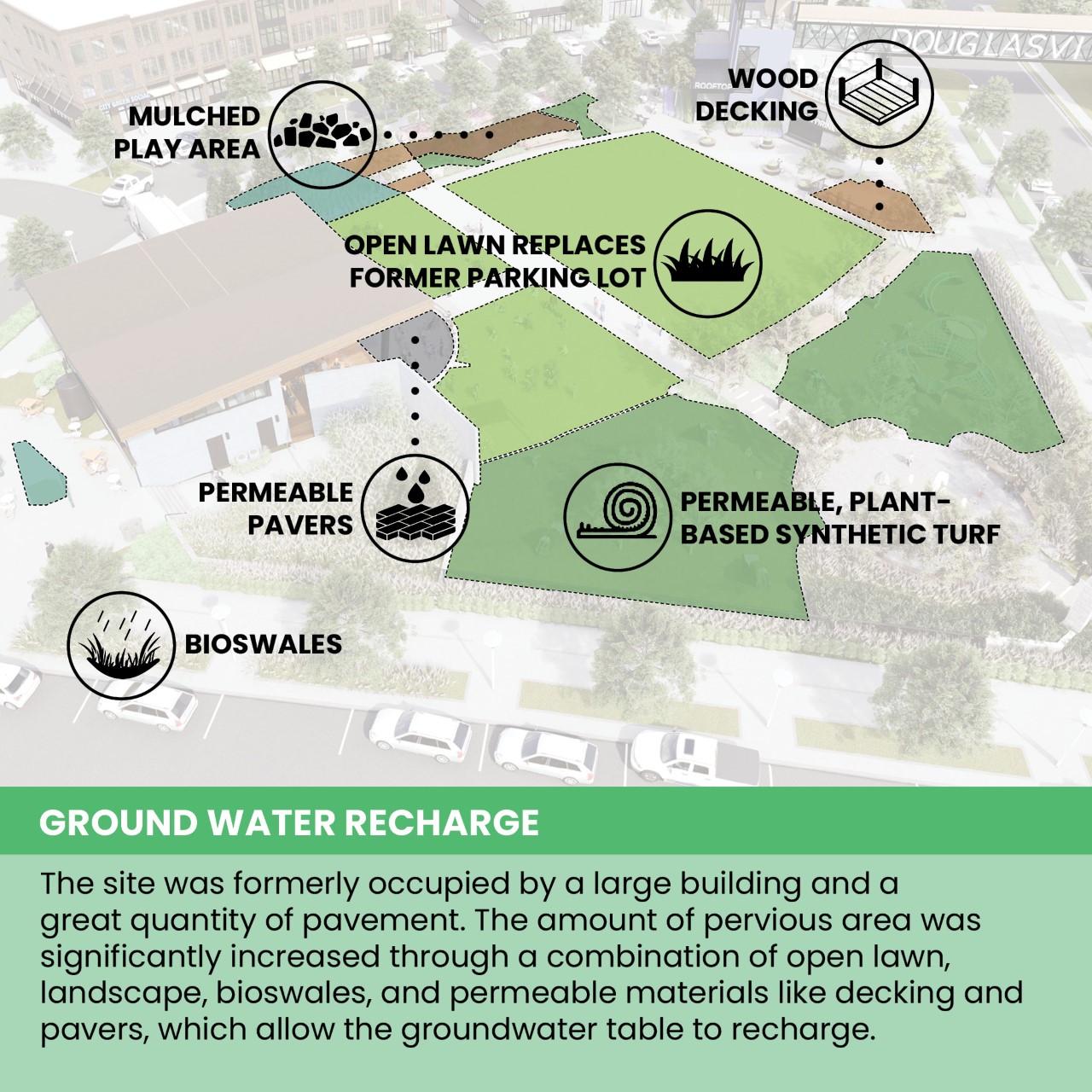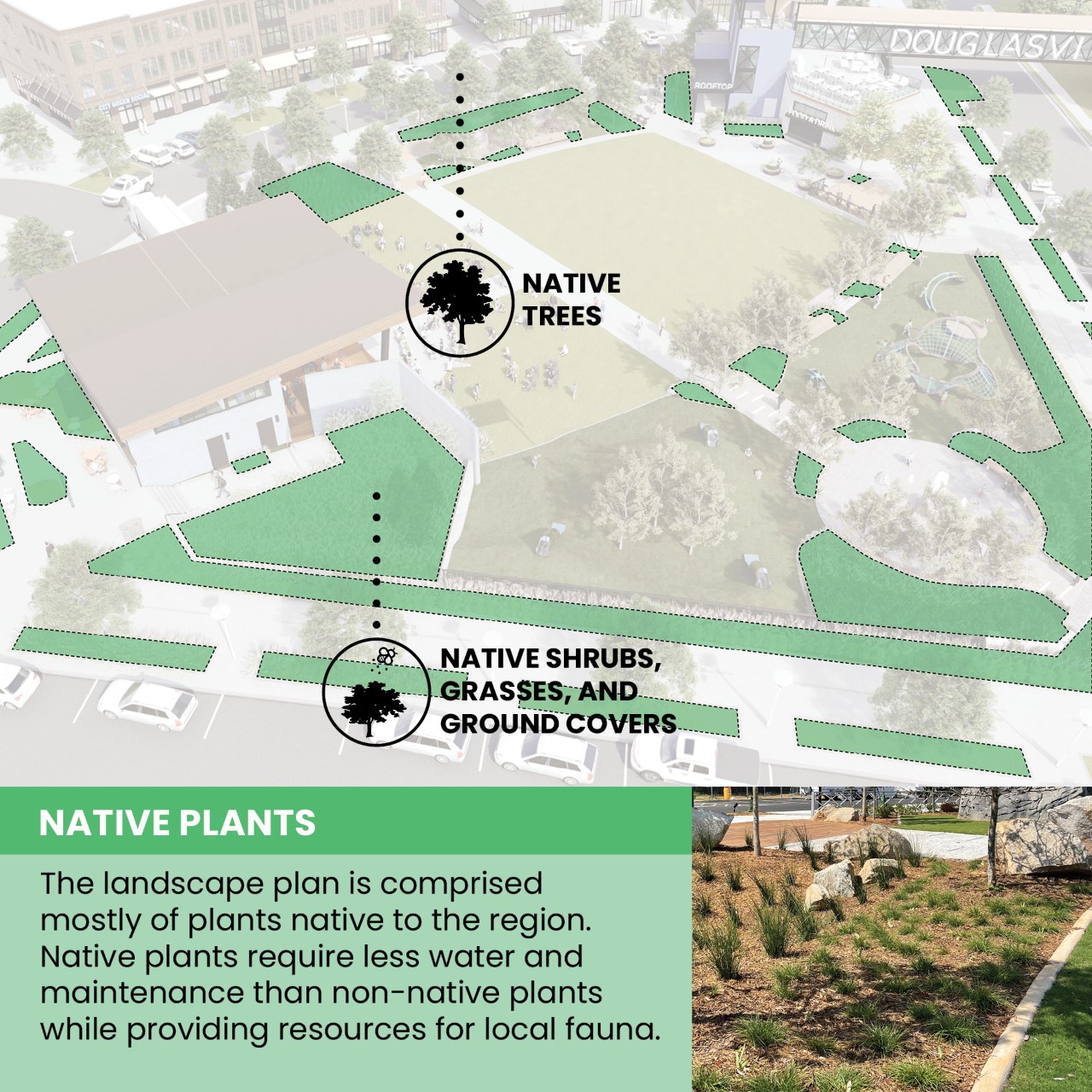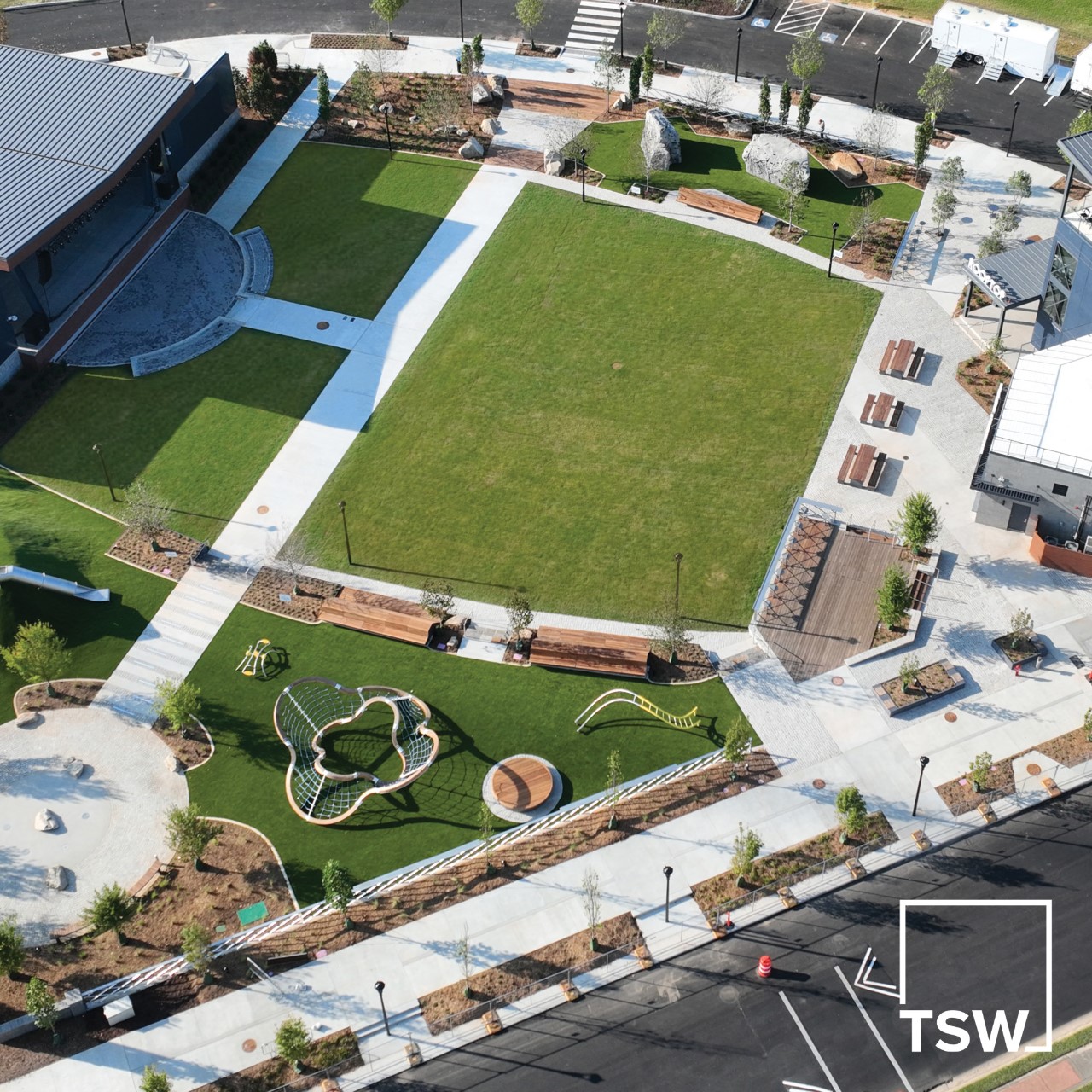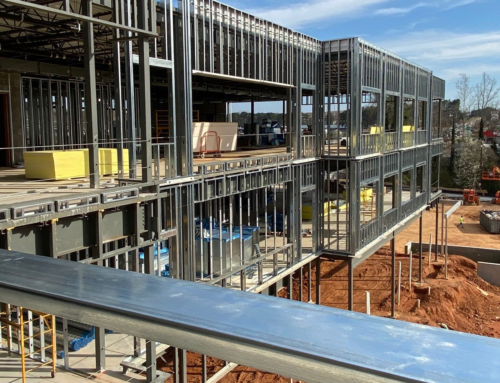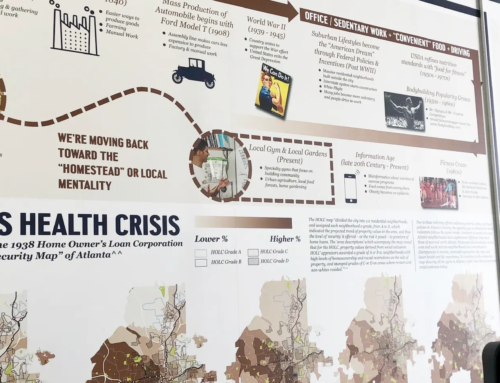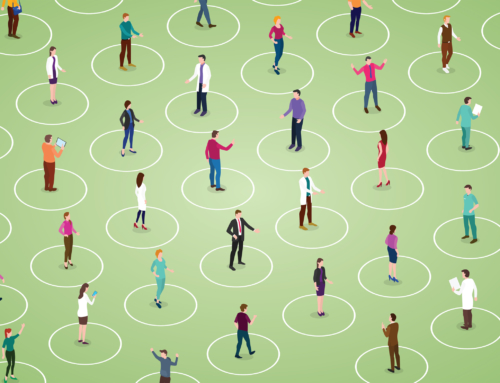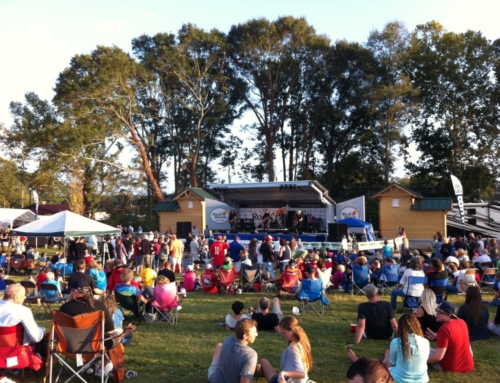Sustainability Strategies
ECONOMIC SUSTAINABILITY
Public spaces, such as this, are generators for development and city revenue from events/taxes.
A pedestrian bridge and part of an existing building were re-purposed, which reduces the amount of new materials needed and conserves energy throughout the process.
RE-PURPOSED BUILDINGS
RECLAIMED MATERIALS
Boulders found on site were integrated into the site walls, and blasted rock outcroppings found on site were used as fill and sub-base material.
Furnishings on site were primarily supplied by Streetlife, using FSC-certified, sustainably-harvested hardwoods, which supports responsible forest management.
SITE FURNISHINGS
WATER COLLECTION & REUSE
Roof runoff is collected in an above-ground cistern, which then flows to the underground cistern. Runoff from the splashpad is also collected into an underground cistern and used for irrigation. There is also a large water quality system under the lawn.
The site was formerly occupied by a large building and a great quantity of pavement. The amount of pervious area was significantly increased through a combination of open lawn, landscape, bioswales, and permeable materials like decking and pavers, which allow the groundwater table to recharge.
GROUND WATER RECHARGE
NATIVE PLANTS
The landscape plan is comprised mostly of plants native to the region. Native plants require less water and maintenance than non-native plants while providing resources for local fauna.

